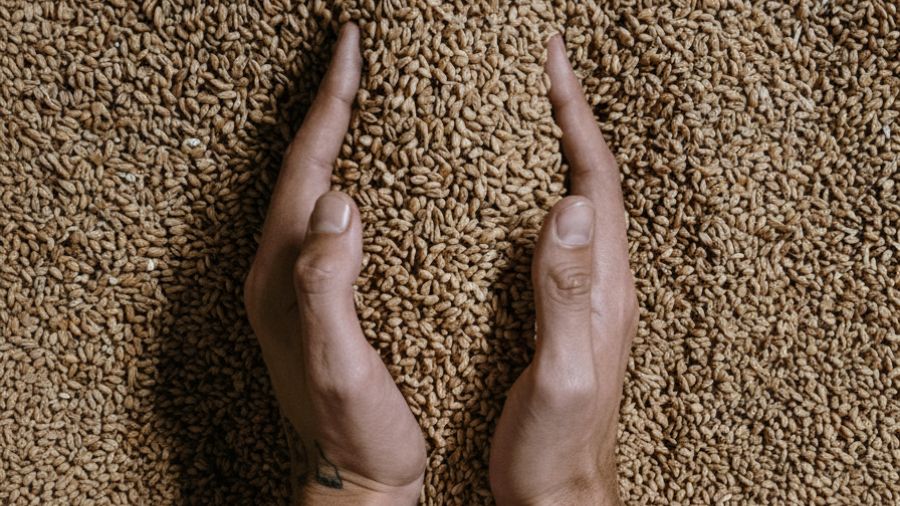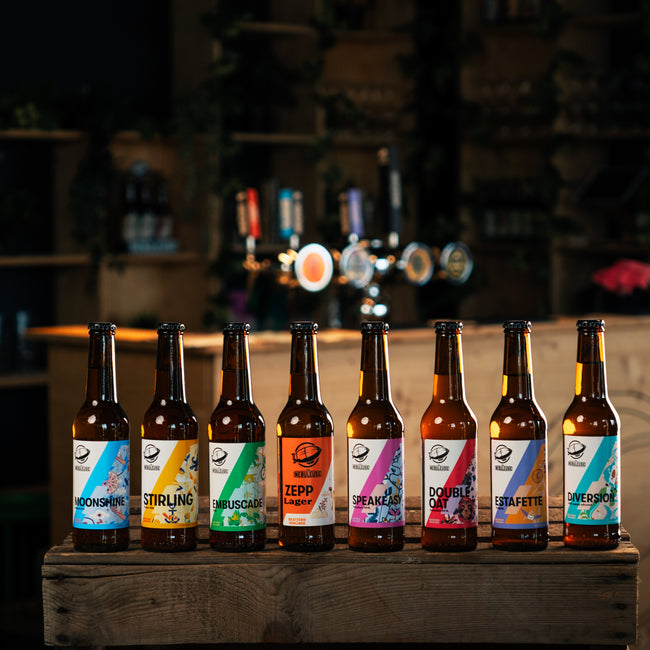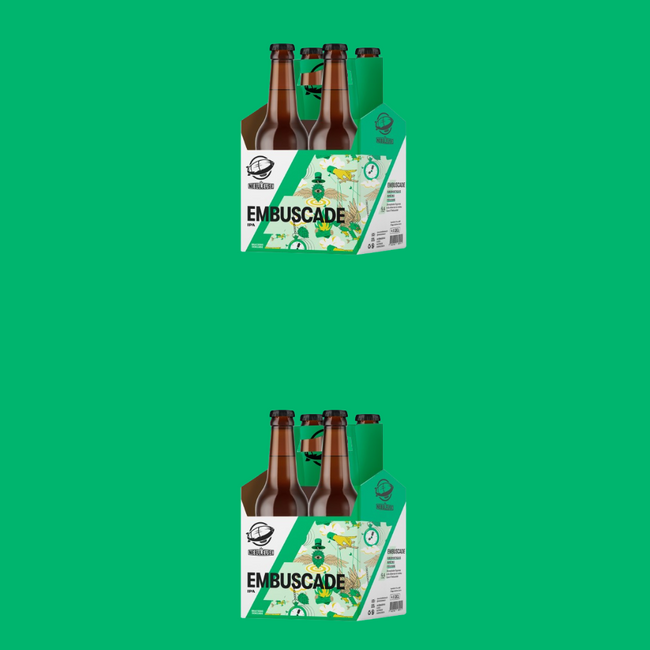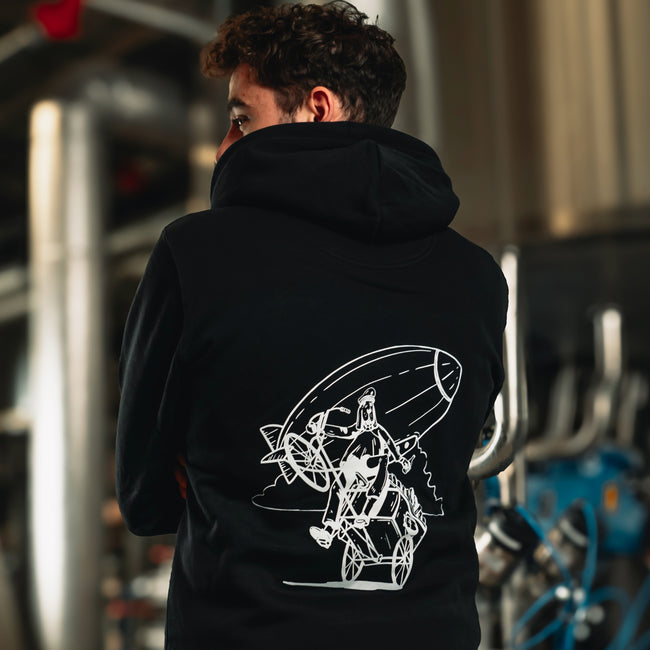The six steps to transforming barley into exceptional beer

Let's face it: transforming ordinary barley grains into hoppy nectar is a bit like modern witchcraft. Except instead of magic spells, we use enzymes. And instead of steaming cauldrons... okay, we still have steaming cauldrons.
Six steps. That's all it takes to go from grain to glass. Six steps where science flirts with art, where technical precision rubs shoulders with the brewer's intuition. Ready for a behind-the-scenes look at our bubbly lab?
Step 1. Crushing or how to wake up Sleeping Beauty
Malted barley grain is like an encrypted hard drive: all the information is there, but you need the key to access it. Our key? A roller mill that gently (but firmly) cracks the grain's husk.
The goal isn't to grind it all into flour—a rookie mistake. No, we're aiming for a "muesli-in-the-middle-of-the-day" texture: chunky pieces with the outer shells still recognizable. Why? Because these outer shells will become our natural filter later on. Clever, right?
Too fine, and it's a disaster: Imagine trying to filter coffee with flour. Spoiler alert: it doesn't work very well. Too coarse, and the enzymes will struggle to access the starch. It's like trying to eat M&Ms without biting into the shell—frustrating and ineffective.
Step 2. Mashing, enzymatic speed dating
Now that our grains are crushed, we toss everything into hot water. But be careful, this isn't just any old gruel we're making. This is the scene of an epic battle between overexcited enzymes and innocent starch chains.
The stars of the show? Alpha and beta-amylase, two enzymes named after science fiction characters that break starch into sugars. Alpha attacks like a brute, cutting anywhere. Beta, more delicate, nibbles at the ends to create clean, fermentable sugars.
The great thing? These enzymes are thermal divas. Between 62 and 65°C, beta dominates = drier, alcoholic beer. Between 68 and 72°C, alpha takes over = rounder, full-bodied beer. It's this surgical mastery of temperature that allows us to sculpt the profile of our Zepp - a razor-sharp lager where every degree counts.
We literally play with the temperature like a DJ with their turntables, creating levels, escalations, and plateaus. It's our secret score for composing the perfect sweet symphony.
Step 3. Filtration and rinsing, the subtle art of grain spinning
After an hour of mashing, we end up with a mixture that looks like space porridge: the sweet wort (the liquid we want) and the spent grains (the solid residue we keep for the local cows - expert-level recycling).
The spent grains form a filter bed at the bottom of our tank. The wort flows through, clear as a brewer's tears of joy over his first successful IPA. But we're not done yet! These spent grains still retain precious sugars, like a sponge soaked in syrup.
Rinsing is a commando operation to recover these last sugars. We gently sprinkle with hot water, but not too hot! Above 78°C, we begin to extract tannins that would make our beer too astringent.
It's a delicate balance: enough to maximize yield, not too much to keep the beer clean. A bit like squeezing a tea bag—there comes a time when you have to stop.
Step 4. Boiling and hopping, the moment when it gets serious
The clarified wort is transferred to the boiler for an intense jacuzzi session. 60 to 90 minutes of vigorous boiling, and then the show begins!
Boiling is the brewer's Swiss Army knife : it sterilizes, it concentrates, it coagulates unwanted proteins. But most of all, ABOVE ALL, it's when the hops come into play.
Early-boil hops? The heavy hitters that bring the bitterness. Their alpha acids transform through isomerization—basically, the molecules do a little chemical remixing to become bitter. The longer they sit, the more IBUs (bitterness units, for short) they release.
The final hops? The artists that explode with aromas without overly bittering. It's like the difference between a strong espresso and an aromatic filter coffee—same ingredient, completely different result.
The final whirlpool creates a vortex worthy of Scylla and Charybdis. Coagulated proteins and plant debris collect in the center, leaving a clear wort ready for the next step.
Step 5. Fermentation, when the yeasts party
Flash cooling from 100°C to 20°C - a thermal shock necessary to avoid contamination and prepare for the arrival of our VIPs: the yeasts.
These tiny, single-celled creatures are the true rock stars of the process. Throw them into the wort, and the metabolic party begins! They gobble up sugars like microscopic Pac-Man creatures, spitting out alcohol and CO2.
But yeasts aren't just alcohol-producing machines. No, no, they're also genius flavorists, creating fruity esters, spicy phenols, and a whole aromatic bouquet that gives each beer its personality.
Fermentation temperature? It's our control lever. Too hot, and the yeasts go wild and produce solvent aromas (not glamorous). Too cold, and they go on strike. We monitor it like a hawk, with probes and regulators worthy of NASA.
This microbial dance is worth exploring—check out our deep dive on special fermentation techniques for the juicy details.
Step 6. Conditioning, polishing the liquid diamond
Once the main fermentation is complete, our beer enters "finishing" mode. This is where the magic really happens, where a good beer becomes exceptional.
Cold storage precipitates the last of the yeast and proteins in suspension. The beer clarifies naturally, like a sky clearing after a storm. Some are dry-hopped—a cold infusion of hops that boosts the aromas without adding bitterness.
Carbonation? Either let the yeasts work in the bottle (refermentation = natural bubbles + bonus complexity), or inject CO2 like the pros. Both work, but refermentation adds that little artisanal je ne sais quoi.
Our Double Oat ? Its legendary creamy texture comes from careful packaging. The oat proteins are lovingly preserved, creating its signature velvety feel. Each additional day of storage refines the balance, smooths out any rough spots, and harmonizes the whole.
From seed to moss, mission accomplished
Six steps. Six crucial moments where everything can tip the scales, from sublime to mediocre. From meticulous crushing to patient packaging, each phase influences the final character of the beer.
This is what craft is all about: not just following a recipe, but understanding how each parameter impacts the result. Adjusting, experimenting, tasting, and repeating. A process that requires as much scientific rigor as creative intuition.
So the next time you sip one of our creations, think about the incredible journey these grains take. From their malty slumber to their liquid apotheosis, a whole epic journey lies hidden in your glass.
Science, passion, and a touch of madness - the secret recipe behind every brew that comes out of our house.
Cheers 🍻









